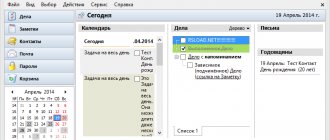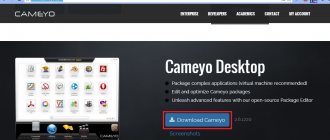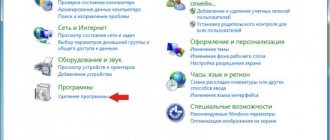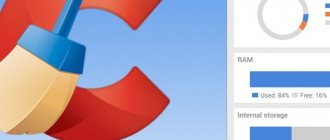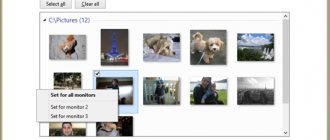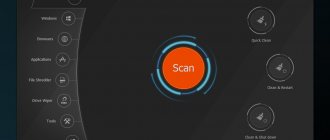Among computer software, portable programs occupy, if not a leading position, then at least one of the first places. This is due not only to the ease of use and launch from any storage medium, but also to the ease of transportation in terms of the fact that the program can be recorded on a disk or a regular flash drive. So, let's try to understand the main topic “Portable soft - what is it?” Understanding this will always be useful, especially for saving disk space, reducing the consumption of system resources, and even when restoring system functionality after virus attacks.
Portable: what does it mean?
To begin with, let’s define the term itself, logically based on the translation of the word from English. In this case, we use the translation and interpretation of the concept of what a portable version of a program is in relation to computer systems.
In general terms, portable means a portable (portable, portable, standalone) program that can be stored on any removable storage medium and does not require installation on the hard drive of a computer or laptop to run or function. The advantages of such applications are obvious.
Multimedia
To play a wide variety of multimedia formats: mpeg, divx and xvid, mp3 and wma, you can use the portable VLC Media Player program, it will eat everything. Also includes DVD, Video CD and streaming audio and video.
And two more programs that are directly related to multimedia:
- ImgBurn - allows you to easily burn DVDs and CDs from images, as well as create these images
- Audacity is a pretty good portable audio editor in which you can cut music, record audio from a microphone or other sound source, and perform many other tasks.
The difference between portable versions and installed applications
To consider this issue, we will set some initial conditions. So, we have a portable version of the program. What this means in terms of standard methods for installing and using an application is easy to understand with a simple example.
There is probably no need to explain that in the standard version, for installing a software product on a computer system, as a rule, a special file is provided, usually called Setup.exe, the launch of which triggers the installation process, which involves unpacking and copying the main modules of the program to the computer’s hard drive, the executable file for launching the main application, additional dynamic libraries, databases used in work, and even virtual device drivers that can be used as controllers. A striking example of such a controller is the Guitar Rig virtual “gadget” driver for guitarists.
Now let's look at the main question: what is portable soft. Unlike installable programs and applications, portable software packages do not require installation on your hard drive. They run using a single executable file with the .exe extension, which is located in the program folder. For example, if the appropriate conditions are set, the same data downloaders from torrent trackers can immediately unpack archived files to disk in the form of a new directory with the same name of the downloaded torrent. All that remains is to enter the desired folder and run the corresponding file to get started.
Contents of the portable package
What does a portable version mean in relation to what the composition of the components required for the launch and correct operation of any portable application may be, we will now try to figure it out.
Serious software products cannot consist of only one program startup file. This requires the presence of many additional components (the same DLLs or databases).
Naturally, the application versions themselves may vary greatly in composition. It does not matter that the package version indicates that this is the Portable version. What does this mean in terms of data content? It’s worth saying right away that such packages are much smaller in size than even similar installation distributions.
Not to mention the above components, it can be noted that there are quite interesting programs presented in the form of a single file. What is most interesting is that this is not always a file with the extension .exe (executable-file). There are quite a lot of options in the form of using self-extracting archives or Java applications. They run provided that the necessary basic programs and platforms are initially installed on the system.
For example, the loader from the popular DepositeFiles file hosting service called DF Manager is generally presented in the form of a file with the .jar extension, which allows it to be used in both mobile and computer systems (support for the Java platform is required).
Access to the Internet
Choosing a program for Internet access is a matter of your taste and needs. Almost all modern browsers are also available in portable versions: Google Chrome, Mozilla Firefox, Opera - use the one that suits you best.
Chrome Portable
To access FTP accounts, you can use the free programs FileZilla and FireFTP, which provide easy access to FTP servers.
For communication there is also a complete list of programs; there are also Skype Portable and ICQ/Jabber clients, for example Pidgin.
How portable programs work
I think it is already clear that the principle of operation of portable programs and applications is radically different from stationary software products installed into the system. The fact is that during a standard installation, not only all the main components are copied to the hard drive. The corresponding entries are also made in the system registry (without this, the application simply will not be accepted by the operating system).
This is where the portable version comes to the rescue. What does this mean based on registry usage? Everything is quite simple. As is already clear, installation is not required. Accordingly, the program does not create keys in the registry when launched (even if it does create them, they are temporary, which are automatically deleted upon completion of work).
The advantages are obvious: the system does not load, and other applications launch quite quickly. In general, a portable program takes up very little space in the same RAM, and in most cases does not affect the CPU load at all.
Security and portable programs
From the above, I think you understand what portable programs are and what advantages you get. Now let’s touch on the important issue of your safety when using such programs.
Be aware that there are attackers who want to get your email password or other valuables that may belong to you. You need to download Portable from trusted sources (portable programs, like any program, can be injected with a virus(es)). When downloading Portable programs, check them with an antivirus with current antivirus databases.
Those who store such programs on flash drives forget about the security of the programs, because by connecting a flash drive to someone else’s computer, you can infect not only the flash drive, but also the programs with viruses. To do this, store copies of the programs on your personal computer. Now, when you download programs marked Portable, you know what version it is.
Operating system emulators
Programs that can emulate a full-fledged operating system with all its functions are almost the most popular. In case of system failures, such boot managers play a primary role. Not only do they allow you to install the system, as they say, “from scratch,” such applications are also capable of recreating some semblance of an OS with support for the disks and drivers used.
Let's say we have a disk with a version of the boot manager and a Windows 7 Portable version emulator. What does it mean? This means that an almost complete system will be loaded onto the computer and will allow you to use, if not all, then most of its functions. Typically, such applications run from either an optical disk or a flash drive.
You will have to pay attention to the BIOS, where the appropriate boot priority should be indicated (Boot Priority / First Boot Device / CD/DVD or USB). The names of sections and commands may vary depending on the BIOS manufacturer, but this does not change the essence.
Graphic editor
As already written, in the article we are talking about free portable applications. Those. not about photoshop portable. So, among the raster editors available in a portable version, the best is Gimp. It can be used for simple editing, cropping, rotating photos, as well as for more professional purposes. In addition, you can convert image formats using Gimp. A vector editor you should pay attention to is Inkscape, which allows you to do much of what is available in professional editors from Adobe and Corel.
If you do not have a goal to edit photos using portable programs, but only view them, the XnView and IrfanView Portable applications will help you here. Both of these apps support a variety of raster and vector formats, as well as animations, videos, and icon sets. They also contain basic tools for editing and converting image formats.
Another portable application related to graphics and very useful at the same time is CamStudio. With this program you can easily record everything that happens on the screen, as well as audio on your computer, into a video file or flash.
Antiviruses and diagnostic tools
Anti-virus protection is the most popular area of application for portable programs. When a computer is infected with viruses, the programs themselves, running under the operating system (stationary), cannot always perform a full scan. In particular, this applies to startup items. In other words, there may be threats at the start of the OS, but the antivirus, even if it recognizes them, does not remove them.
It's another matter when the portable version of the antivirus starts before the OS starts. Using the Kaspersky Rescue Disc application as an example, you can see that the utility starts from a disk or flash drive even before Windows starts.
At the same time, the program is able to identify and remove threats located in RAM, boot sectors, not to mention other threats in the application cache or in email. Please note that after loading the Windows OS, it is simply impossible to perform such actions. In most cases, this utility allows you to restore system functionality when other means fail.
How to create a portable version of the application yourself
If we talk about how to make a portable version of a program of any type, do not delude yourself. It is impossible to create such a package from professional applications. But for lower level programs this technique is applicable.
Some people advise deleting files like Uninstall before creating. Let’s say right away: it’s not worth it (you never know, maybe you’ll have to “demolish” the program from the computer later).
But this is not the main thing. You can use specialized utilities to create portable versions like Thinstall Virtualization, or you can do it even simpler by using the regular WinRAR archiver.
The whole procedure boils down to using the button to create an SFX archive, after which you need to select the “Create continuous archive” command.
Then, in the archive parameters, specify the path “In the current folder”, and then go to the “Modes” tab using the “Extract to temporary folder” command, where a check mark is placed opposite the “Hide all” information output line. Now on the “Text and Graphics” tab you can select a logo (icon), if, of course, this is needed. All that remains is to confirm your actions. Upon completion of the procedure, you will get a portable version that can be copied to removable media.
Office applications
If you need to view and edit Microsoft Office documents, LibreOffice Portable is the best option for this. This free office suite is compatible not only with files in the Microsoft Office format, but also with many others.
Libre Office
In addition, if you do not need all the functionality of office applications, there may be applications such as Notepad++ or Metapad for editing texts and code on a flash drive. A couple more substitutes for the standard Windows notepad with slightly more advanced functions are FocusWriter and FluentNotepad. And in my opinion, the most convenient editor for a wide variety of code with syntax highlighting is the Sublime Text application, also available in a potable version on the program’s official website.
To view PDFs, I recommend using programs like Foxit Reader and Sumatra PDF - both are free and surprisingly fast.





